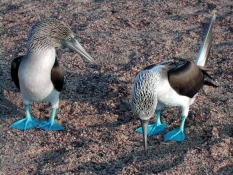Science Lesson Plan Format
|
Title of lesson:
(Try and come up with a catchy, descriptive title for the lesson.
This can set the tone and pique the interest of the students.)
Topic: Grade level/s: Time needed: (A lesson plan is usually intended for a single or double period. You can specify "One 45 minute period, an eighty minute double period, etc. A lesson plan is very different from a unit plan which takes place over a much longer period of time, e.g. more than one day, weeks or longer) Science or Math background material for the teacher: (Include information on the science concepts and skills, terms, related to the topic. This material is to make sure the teacher is familiar with the science content, and it not necessarily going to be given to the students. Instructional Objectives: (Make each objective as specific as possible. Use Bloom's taxonomy to make sure you include objectives involving different types of skills and knowledge. You can use SWBAT (students will be able to) to begin objectives. Later when you design your assessments you can go back and look at these objectives to make sure your assessment covers all the major objectives. National Science Education Standards met by this lesson: (You can visit this link http://www.nap.edu/readingroom/books/nses/ and then copy and paste the standards your lesson meets into your lesson plan. You can start out by looking at the relevant Content Standards for the appropriate grade level. Materials: List all materials needed to carry out the lesson. These could be chemicals, lab apparatus, plant or animal specimens, rocks or minerals, materials such as paper cups, string, rubber bands, etc., computers (specify operating system), web browsers with plugins, java, javascript, other software, PowerPoint presentations (include a copy) worksheets or handouts (include a printable copy with the lesson plan),books, magazines, articles. For each item give a complete description and where you can obtain the item. Procedure: (Describe in detail the steps you would go through to carry out the lesson from beginning to end. Include enough detail so that another science teacher could use your lesson plan to teach this activity, even if they weren't familiar with the topic. You can additionally specify what the students will be doing and what the teacher will be doing, just make sure to put it in sequence from beginning to end. Sometimes when you begin a lesson it is a good idea to try and determine what the students already know about the topic. You can find this out in a variety of ways such as careful questioning, having them do a concept map, draw what they understand about a topic, giving a brief survey, etc. Obviously a lesson plan is not set in stone, and good teacher will make adjustments and vary things depending on the situation. However, a detailed and well planned lesson plan is especially useful the first few times you teach a lesson. It is also a great resource to share with other teachers for the future days when you might not be prepared and can pull out a tried and true lesson that is well documented.)
Adapatations for students with disabilities: (How might you adapt this lesson for students with different disabilities, e.g. physical, visually impaired, learning disabled. You might want to check out SAVI-SELPH for examples.) Multicultural Connections: (Are there any ways you could integrate different cultures into your lesson? ) Possible ways technology might be incorporated: Assessment (How would you assess whether the students have accomplished the objectives? You can use both formative and summative assessments, traditional or alternative assessments) Extension activities: Provide some suggestions for students who want to learn more on this topic. These could be activities that could be done at home or online. Bibliography/References: (List any useful books, articles, web sites) |
